Oh wow...significant propaganda victory there, by the Axis, turning the initially pro-Allied King Haakon to an ally.
You are using an out of date browser. It may not display this or other websites correctly.
You should upgrade or use an alternative browser.
You should upgrade or use an alternative browser.
The Co-Prosperity Sphere
- Thread starter CountofDooku
- Start date
Threadmarks
View all 912 threadmarks
Reader mode
Reader mode
Recent threadmarks
Chapter 884: Hitler's former Cabinet – A tale of Robert Ley Chapter 885: Imperial Mengjiang Army Uniforms, Ranks, Tactics and Strategy of the Imperial Chosen Army Chapter 886: Mengjiang Khanate Navy and SNLF Chapter 887: The Yankoku Prince and Emperor Chapter 888: Mini-Submarine Carrier Submarines Chapter 889: Capture of the D’Entrecasteaux Islands Chapter 890: The Iberian WallBecause the Japanese made a compromise between client states to small to defend and supply themselves and these so big they could become dangerous or independant. Also some member states (Mengjiang and Tibet but also Han China aka Wang's government has already claims on these regions in central china and east turkestan. At the moment the turkish in Xinjiang and other muslim majorities there are the only clearly Muslim dominated warlord state in China. The Ma Clique in Central China was too, but since their alliance with Chiang and Mao's Communists in the United Front they are not that autonome anymore and there are growing tensions between the Hui and the other muslim against the Communists inside the alliance of the United Front because of how they treaten and behave against each other.Why not a Hui Empire or Huikoku?
Not so much a ally as a forced ally, his main intention is to limit Quisling and his supporters influence so he will collaborate to a extend to save the state and society of Norway, just like OTL King of Denmark Christian X did during occupation, he resisted in his own way, wearing a black arm band in solidarity with the Jews who had to wear them during WW ll and he would ride into the city each day to show the people he was there directly for them;Oh wow...significant propaganda victory there, by the Axis, turning the initially pro-Allied King Haakon to an ally.
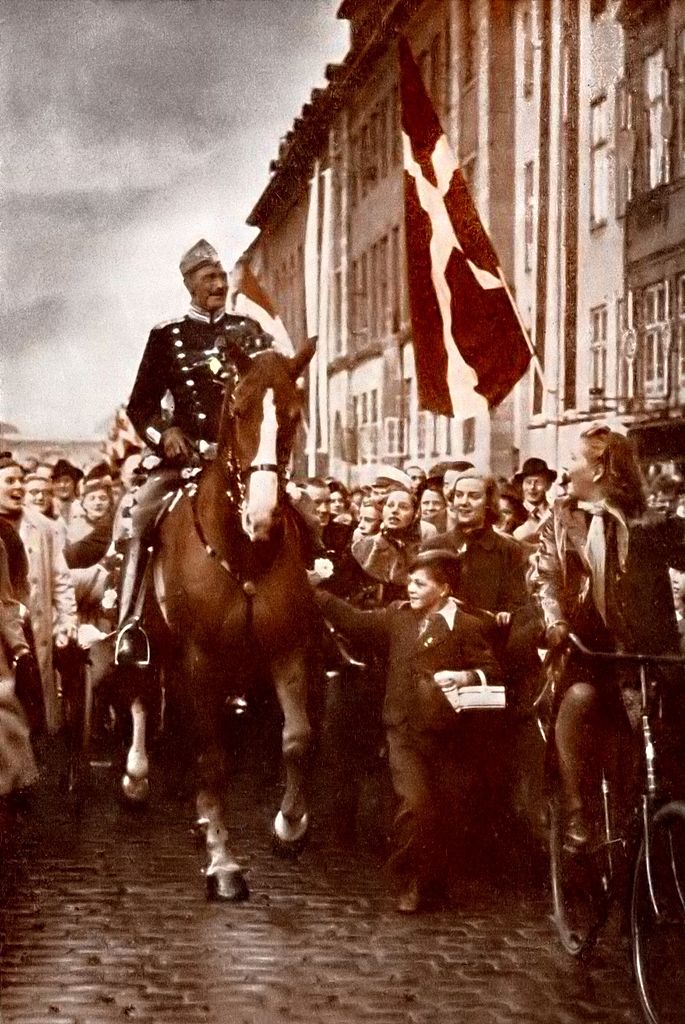
Last edited:
Speaking of which, what's the status of the Jews ITTL? IIRC while Wilhelm II was an anti-Semite himself, he didn't quite approve of the Nazi's extreme policies IOTL. Has he lightened things up ITTL, after Hitler and the Nazis were gotten rid of? What about Wilhelm III?
As a Jew myself (our family name was Hirsch once) there will be a whole Chapter on my people later TTL. But for now yes, while Wilhelm was a anti-Semite he wasn't the Nazi's or nearly as extreme as them, so somehting like the Madagascar Plan would be more up the ally of some Antisemitics TTL I assume, or plans to settle the Jews in a once again Ottoman Province of Palestine, also quiet possible to settle them east, this time not in Poland for extinction but in White Ruthenia were King Wilhelm wants to settle them as in their own authonomic region as participating citizens to help him build a new state from the ground. So we have three possible locations for a strong Jewish Population and maybe even partly independent state or authonomic regions later on TTL.Speaking of which, what's the status of the Jews ITTL? IIRC while Wilhelm II was an anti-Semite himself, he didn't quite approve of the Nazi's extreme policies IOTL. Has he lightened things up ITTL, after Hitler and the Nazis were gotten rid of? What about Wilhelm III?
So we don't need to buy La Plata from Argentinia like Herzel once proposed
Chapter 109: The Building of a Nation – the Kingdom of White Ruthenia
Chapter 109: The Building of a Nation – the Kingdom of White Ruthenia:

The Kingdom of White Ruthenia would be build by will and muscle had the young White Ruthenian King Wilhelm the younger brother of German Emperor Wilhelm III promised and he would hold true to this words. He wanted to show the other members of the Axis Central Powers and a monarchistic Europe that his White Ruthenia was free and strong, unlike the oppressed Belorussian Socialist Soviet Republic across the border. Using his own National Monarchist group of the White Ruthenian Nationalist Corps, the new King started to attack the Osadniks (Polish: osadnik/osadnicy, "settler/settlers, colonist/colonists") the veterans of the Polish Army, that as civilians who were given or sold state land in the Kresy (current Kingdoms of White Ruthenia and Ukrainia) territory ceded to Poland in the Polish-Soviet Peace Treaty of 1921. While King Wilhelm tried to establish a on White Ruthenian identity, this Osadniks were a problem for his goals and ideas to do so and so he fought them; first with words, later with the force of the White Ruthenian Nationalist Corps, White Ruthenian Police and White Ruthenian Guard. This assault however was widely unnoticed in the world and even within White Ruthenia since King Wilhelm did so during the Great Agrarian Land Reform and Urbanization Campaign, a four year plan that intended to bring his new independent nation into modern times. Not only Osadniks were attacked, but the overall outdated land and farming system.
The new King Wilhelm enforced a nation wide White Ruthenian Urbanization to modernism the state like the examples in Central Europe. To make up for the loss of farmers in the rural regions, King Wilhelm imported modern farming equipment from Germany to modernize and mechanize the agrarian sector. Together with his White Ruthenian Literacy Campaign in newly build Schools and Universities Wilhelm managed to quickly educate the farmers to use the new equipment efficient (alongside the rest of his population over time). On of his most ambitious projects was even supported by the German Empire and the Austrian-Hungarian Empire with equipment and financial help; the plan to dry out the Pripyat Marches to get new farming and building land. While the overall plan would benefit the White Ruthenian Kingdom, the two powerful neighbors and protecting states had their own reasons to support the plan; the dried out Pripyat Marches were roads and railroads could be build would ease their advance and supply in the coming offensive against the Soviet Union.

The newly established Organization of the White Ruthenian Youth was educated patriotic in the new schools and turned from there into the White Ruthenian Nationalist Corps during their teen and young adult years similar in it's goals and paramilitary work then the German Reich Labour Service (Reichsarbeitsdienst; RAD). The newly formed Police, Guards and Militias were organized as the White Ruthenian Home Defense that would become the base for the Royal White Ruthenian Army (including the air force). Mostly using mobile cavalry regiments for now the Royal White Ruthenian Army would soon be mobilized and later even mechanized. Despite their offensive capability, the Royal White Ruthenian Army was created for the purpose of liberating the Belorussian Socialist Soviet Republic and then the defense of the united Kingdom of White Ruthenia only. To be secured from any further Russian and Eastern assaults on their territory, some White Ruthenian Generals already planned a Ostwall (Eastern Wall) in their then new eastern border, similar to the Maginot Line that was supposed to defend the French against a assault from the east, but not all White Ruthenia Politicians and Militarists supported this purely defensive plan, that would come at the cost of a smaller army, to keep the defense budget small and maintainable.

The Kingdom of White Ruthenia would be build by will and muscle had the young White Ruthenian King Wilhelm the younger brother of German Emperor Wilhelm III promised and he would hold true to this words. He wanted to show the other members of the Axis Central Powers and a monarchistic Europe that his White Ruthenia was free and strong, unlike the oppressed Belorussian Socialist Soviet Republic across the border. Using his own National Monarchist group of the White Ruthenian Nationalist Corps, the new King started to attack the Osadniks (Polish: osadnik/osadnicy, "settler/settlers, colonist/colonists") the veterans of the Polish Army, that as civilians who were given or sold state land in the Kresy (current Kingdoms of White Ruthenia and Ukrainia) territory ceded to Poland in the Polish-Soviet Peace Treaty of 1921. While King Wilhelm tried to establish a on White Ruthenian identity, this Osadniks were a problem for his goals and ideas to do so and so he fought them; first with words, later with the force of the White Ruthenian Nationalist Corps, White Ruthenian Police and White Ruthenian Guard. This assault however was widely unnoticed in the world and even within White Ruthenia since King Wilhelm did so during the Great Agrarian Land Reform and Urbanization Campaign, a four year plan that intended to bring his new independent nation into modern times. Not only Osadniks were attacked, but the overall outdated land and farming system.
The new King Wilhelm enforced a nation wide White Ruthenian Urbanization to modernism the state like the examples in Central Europe. To make up for the loss of farmers in the rural regions, King Wilhelm imported modern farming equipment from Germany to modernize and mechanize the agrarian sector. Together with his White Ruthenian Literacy Campaign in newly build Schools and Universities Wilhelm managed to quickly educate the farmers to use the new equipment efficient (alongside the rest of his population over time). On of his most ambitious projects was even supported by the German Empire and the Austrian-Hungarian Empire with equipment and financial help; the plan to dry out the Pripyat Marches to get new farming and building land. While the overall plan would benefit the White Ruthenian Kingdom, the two powerful neighbors and protecting states had their own reasons to support the plan; the dried out Pripyat Marches were roads and railroads could be build would ease their advance and supply in the coming offensive against the Soviet Union.

The newly established Organization of the White Ruthenian Youth was educated patriotic in the new schools and turned from there into the White Ruthenian Nationalist Corps during their teen and young adult years similar in it's goals and paramilitary work then the German Reich Labour Service (Reichsarbeitsdienst; RAD). The newly formed Police, Guards and Militias were organized as the White Ruthenian Home Defense that would become the base for the Royal White Ruthenian Army (including the air force). Mostly using mobile cavalry regiments for now the Royal White Ruthenian Army would soon be mobilized and later even mechanized. Despite their offensive capability, the Royal White Ruthenian Army was created for the purpose of liberating the Belorussian Socialist Soviet Republic and then the defense of the united Kingdom of White Ruthenia only. To be secured from any further Russian and Eastern assaults on their territory, some White Ruthenian Generals already planned a Ostwall (Eastern Wall) in their then new eastern border, similar to the Maginot Line that was supposed to defend the French against a assault from the east, but not all White Ruthenia Politicians and Militarists supported this purely defensive plan, that would come at the cost of a smaller army, to keep the defense budget small and maintainable.
Last edited:
Crush the Soviets and the pest of Bolshevism, liberate the minorities and reinstall a Tsardom (but most likely with Republic elements).Which are Axis plans for Russia?
What's the eastern border of the Tsardom they could agree with the Sphere? And in the outcome of a successful Northern Expansion, how Japan is going to reorganize captured territories?Crush the Soviets and the pest of Bolshevism, liberate the minorities and reinstall a Tsardom (but most likely with Republic elements).
Chapter 110: Germanicisation and Germanisation of the United Baltic Duchy
Chapter 110: Germanicisation and Germanisation of the United Baltic Duchy:
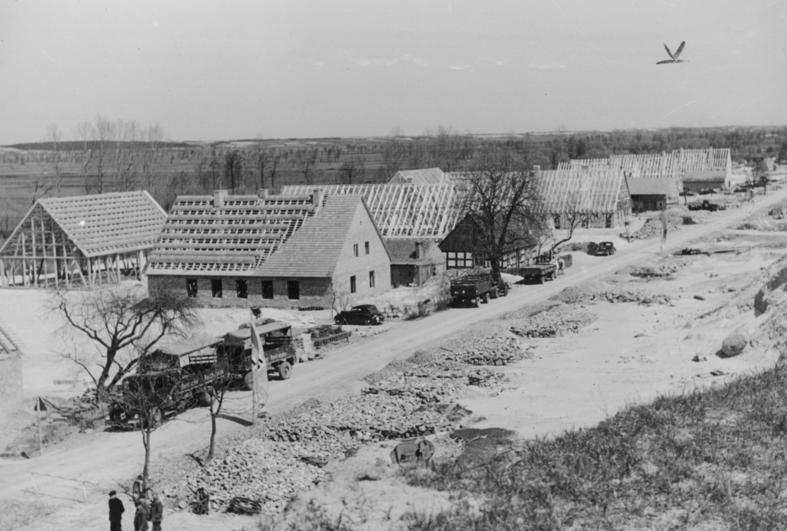
Of the overall 7,200,000 citizens of the United Baltic Duchy only a small minority of 128,000 was German when the new state formed. Despite this the German minority was represented just like the Lithuanian, Latvian and Estonian Majorities in the new state thanks to the Protectorate by the mighty German Empire. Duke Adolf Friedrich of Mecklenburg the monarch of the Baltic Federation tried to organize the new federal state into a united nd strong Baltic nation, with a strong Centralized Government. This however was not the only plan the majority of the German Aristocrats and Military had with the region. The fact that some of them called the state the New Teutonic Order or Teutonenland spoke for their true ambitions. They even pressured Duke Adolf Friedrich with the help of the German Empire to support the overall Germanisierung (Germanicisation, i.e., to make something Germanic) and Eindeutschung (Germanisation, i.e., to make something German) of the local population over time. Some of this plans included to educate and raise Lithuanian, Latvian and Estonian children as Germans, other plans were more direct and focused on settling 445,000 Germans in Lithuania, 575,000 Germans in Latvia and 745,000 Germans in Estonia in the next four years during the first four year Germanisation Plan. The German Empire promoted it's citizens for settling in the United Baltic Duchy with new build modern homes for them and King Duke Adolf Friedrich had to promise them low taxes during the first years in the new state. The overall German and German sponsored United Baltic Duchy portrayed the new settlement as a part of the so called Drang nach Osten (Push to the East) that the German people had since Medieval times in their propaganda. They even told the Lithuanian, Latvian and Estonian Majorities that the new German settlers were there to form a Bulwark against Bolshevism and the Soviet Union and many citizens of the United Baltic Duchy since months familiar with a huge German Military Presence as a Protectorate Force in their country believed this at first. Questions inside the Lithuanian, Latvian and Estonian communities would arise later, when the number of German citizens that stayed was rising to a extend, when all three of their ethnic groups started to look like a minority inside the United Baltic Duchy themselves.
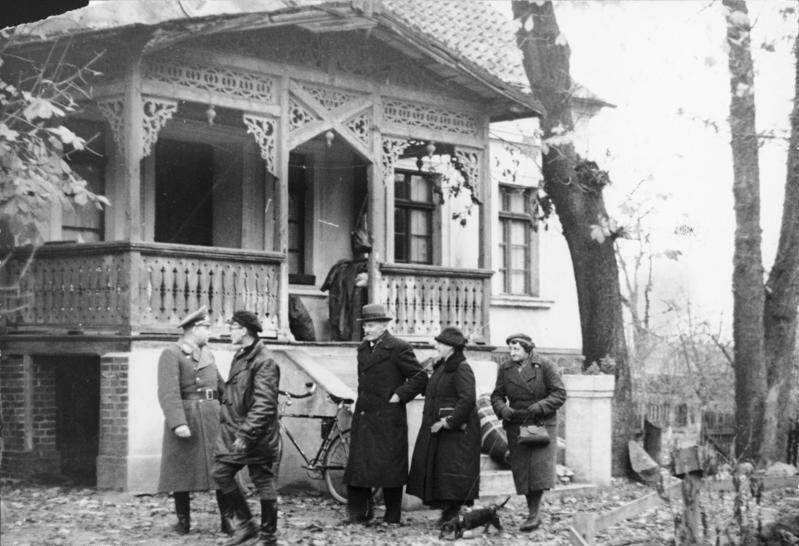
(future German Baltic settlers leaving their old, small homes)

Of the overall 7,200,000 citizens of the United Baltic Duchy only a small minority of 128,000 was German when the new state formed. Despite this the German minority was represented just like the Lithuanian, Latvian and Estonian Majorities in the new state thanks to the Protectorate by the mighty German Empire. Duke Adolf Friedrich of Mecklenburg the monarch of the Baltic Federation tried to organize the new federal state into a united nd strong Baltic nation, with a strong Centralized Government. This however was not the only plan the majority of the German Aristocrats and Military had with the region. The fact that some of them called the state the New Teutonic Order or Teutonenland spoke for their true ambitions. They even pressured Duke Adolf Friedrich with the help of the German Empire to support the overall Germanisierung (Germanicisation, i.e., to make something Germanic) and Eindeutschung (Germanisation, i.e., to make something German) of the local population over time. Some of this plans included to educate and raise Lithuanian, Latvian and Estonian children as Germans, other plans were more direct and focused on settling 445,000 Germans in Lithuania, 575,000 Germans in Latvia and 745,000 Germans in Estonia in the next four years during the first four year Germanisation Plan. The German Empire promoted it's citizens for settling in the United Baltic Duchy with new build modern homes for them and King Duke Adolf Friedrich had to promise them low taxes during the first years in the new state. The overall German and German sponsored United Baltic Duchy portrayed the new settlement as a part of the so called Drang nach Osten (Push to the East) that the German people had since Medieval times in their propaganda. They even told the Lithuanian, Latvian and Estonian Majorities that the new German settlers were there to form a Bulwark against Bolshevism and the Soviet Union and many citizens of the United Baltic Duchy since months familiar with a huge German Military Presence as a Protectorate Force in their country believed this at first. Questions inside the Lithuanian, Latvian and Estonian communities would arise later, when the number of German citizens that stayed was rising to a extend, when all three of their ethnic groups started to look like a minority inside the United Baltic Duchy themselves.

(future German Baltic settlers leaving their old, small homes)
Last edited:
In the momentary plans much like the old Tsardom after Brest-Litovsk (aka minus the liberated minority puppet states) and (this is new) minus the Caucasian and Central Asian Regions of the Soviet Union (Greater Turkestan) that is promised to the Ottomans. After all Russias new Tsardom should not become to great and dangerous ever again to threaten the German Hegemony...What's the eastern border of the Tsardom they could agree with the Sphere? And in the outcome of a successful Northern Expansion, how Japan is going to reorganize captured territories?
Isn't the Sphere going to challenge Turkey for Central Asia?In the momentary plans much like the old Tsardom after Brest-Litovsk (aka minus the liberated minority puppet states) and (this is new) minus the Caucasian and Central Asian Regions of the Soviet Union (Greater Turkestan) that is promised to the Ottomans. After all Russias new Tsardom should not become to great and dangerous ever again to threaten the German Hegemony...
At some time when they border each other there that is very much likely.Isn't the Sphere going to challenge Turkey for Central Asia?
Forgot to answer that earlier; some parts will be annexed by Japan (North Karafuto), Manchukuo (Transamur Region/ Russian Far East) or Mengjiang (Mongolia and surrounding Mongol territories), the rest could become weak puppets mostly populated by russians and lead by former White Russians on their own in the current Sphere plans for the regionAnd in the outcome of a successful Northern Expansion, how Japan is going to reorganize captured territories?
Last edited:
Maybe a Buryatian state around Bajkal Lake or a native Siberian state could be a thing.At some time when they border each other there that is very much likely.
Forgot to answer that earlier; some parts will be annexed by Japan (North Karafuto), Manchukuo (Transamur Region/ Russian Far East) or Mengjiang (Mongolia and surrounding Mongol territories), the rest could become weak puppets mostly populated by russians and lead by former White Russians on their own in the current Sphere plans for the region
Chapter 111: The Creation of a Nation - The Kingdom of the Ukrainia
Chapter 111: The Creation of a Nation - The Kingdom of the Ukrainia:
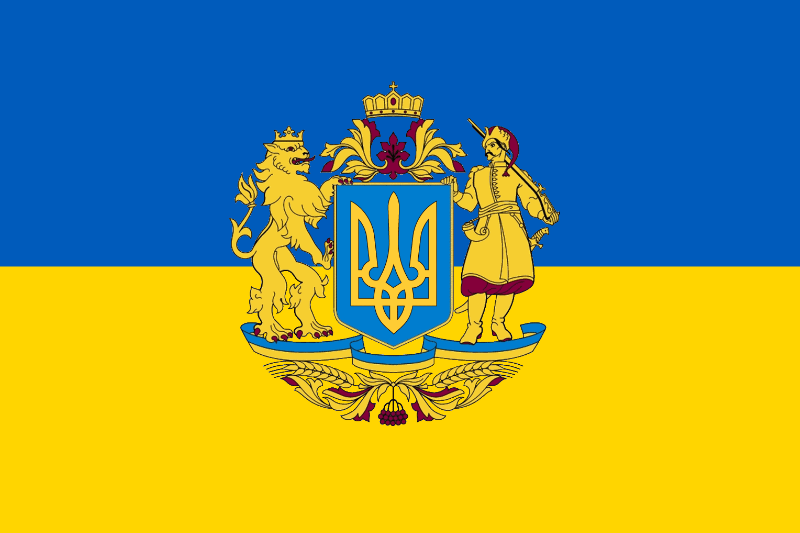
Much like the Kingdom of White Ruthenia, the Kingdom of Ukrainia under Archduke Wilhelm Franz of Austria, now better known as King Basil of Ukrainia, the new Kingdom quickly tried to get rid of the Osadniks (Polish: osadnik/osadnicy, "settler/settlers, colonist/colonists") the veterans of the Polish Army, that as civilians who were given or sold state land in the Kresy (current Kingdoms of White Ruthenia and Ukrainia) territory ceded to Poland in the Polish-Soviet Peace Treaty of 1921. Basil himself was seen as the Voivode (Old Slavic, literally "war-leader" or "war-lord") and Hetman (Old German, literally "Heubtmann" or "Hauptmann" much like a modern General) by many and his Kingdom, was often called a Voivodeate or Hetmanate by some because of his heavily militarization inside of the new nation. A militarization desperately needed when looking at the great and dangerous Ukrainian Socialist Soviet Republic in the Soviet Union across the border. Using the Organisation of Ukrainian Nationalists (OUN, Ukrainian:: Організація Українських Націоналістів, (ОУН), Orhanizatsiya Ukrayins'kykh Natsionalistiv) a Ukrainian political organization established in 1929 in Vienna, that first operated in what was now his Kingdom of Ukrainia As revolutionary ultra-nationalists the OUN have been characterized by some historians as fascist monarchists. OUN strategies to achieve full Ukrainian independence included violence and terrorism against perceived foreign and domestic enemies, particularly Poland and Czechoslovakia (until the Organization became a part of the Kingdom of Ukrainia) and later against the Soviet Union. Besides spreading propaganda and terror against Soviet oppressors and Bolshevik Collaborates and their system in the Ukrainian Socialist Soviet Republic, Basil once he was in command ordered the organization to calm down a little. By doing so he was forcing it to split into those following him OUN-B and those younger and more radial members supported the other part of the faction against Basils more moderate and conservative group.

With the help of terror from the OUN Basil managed to get rid off the former influential Polish Landlords without any direct involvement of his government and it's organizations. The Polish simply fled their homes in fear, because the Ukrainian Police, Guard or Militia sadly never arrived when the OUN threatened them, or only after they were long gone. King Basil then offered to take in some Ukrainians left over in the Kingdom of Poland as a exchange for those Polish now fleeing the Ukraine so that “both might find a place where they will live in peace” and the Royal Polish Government accepted the offer. While not quiet as modern as the Kingdom of Poland and White Ruthenia, or the United Baltic Duchy thanks to Imperial German support, King Basil and the Ukraine tried their best to modernist with Austrian-Hungarian and partly even German help. Together with the White Ruthenian King Wilhelm, King Basil of the Kingdom of Ukrainia supported the plan to dry out the Pripyat Marches with Austrian-Hungarian and German help in equipment and finances. Modern industries were tried to establish and mechanized agrarian equipment was imported from Austria-Hungary to modernist the Ukrainian farming methods. Basils dream and slogan was “the Kingdom of Ukrainia, bread basked of Europe” in hard contrast to the Ukrainian Socialist Soviet Republic were the Soviets had been starving the native population. New schools and a university was build and the Royal Ukrainian army even got his first full tank division, nicknamed the Iron Cossacks thanks to tanks from Škoda in Austria-Hungary.

(the hunt for Bolshevic and Soviet Russian sympathisers by the OUN)

Much like the Kingdom of White Ruthenia, the Kingdom of Ukrainia under Archduke Wilhelm Franz of Austria, now better known as King Basil of Ukrainia, the new Kingdom quickly tried to get rid of the Osadniks (Polish: osadnik/osadnicy, "settler/settlers, colonist/colonists") the veterans of the Polish Army, that as civilians who were given or sold state land in the Kresy (current Kingdoms of White Ruthenia and Ukrainia) territory ceded to Poland in the Polish-Soviet Peace Treaty of 1921. Basil himself was seen as the Voivode (Old Slavic, literally "war-leader" or "war-lord") and Hetman (Old German, literally "Heubtmann" or "Hauptmann" much like a modern General) by many and his Kingdom, was often called a Voivodeate or Hetmanate by some because of his heavily militarization inside of the new nation. A militarization desperately needed when looking at the great and dangerous Ukrainian Socialist Soviet Republic in the Soviet Union across the border. Using the Organisation of Ukrainian Nationalists (OUN, Ukrainian:: Організація Українських Націоналістів, (ОУН), Orhanizatsiya Ukrayins'kykh Natsionalistiv) a Ukrainian political organization established in 1929 in Vienna, that first operated in what was now his Kingdom of Ukrainia As revolutionary ultra-nationalists the OUN have been characterized by some historians as fascist monarchists. OUN strategies to achieve full Ukrainian independence included violence and terrorism against perceived foreign and domestic enemies, particularly Poland and Czechoslovakia (until the Organization became a part of the Kingdom of Ukrainia) and later against the Soviet Union. Besides spreading propaganda and terror against Soviet oppressors and Bolshevik Collaborates and their system in the Ukrainian Socialist Soviet Republic, Basil once he was in command ordered the organization to calm down a little. By doing so he was forcing it to split into those following him OUN-B and those younger and more radial members supported the other part of the faction against Basils more moderate and conservative group.

With the help of terror from the OUN Basil managed to get rid off the former influential Polish Landlords without any direct involvement of his government and it's organizations. The Polish simply fled their homes in fear, because the Ukrainian Police, Guard or Militia sadly never arrived when the OUN threatened them, or only after they were long gone. King Basil then offered to take in some Ukrainians left over in the Kingdom of Poland as a exchange for those Polish now fleeing the Ukraine so that “both might find a place where they will live in peace” and the Royal Polish Government accepted the offer. While not quiet as modern as the Kingdom of Poland and White Ruthenia, or the United Baltic Duchy thanks to Imperial German support, King Basil and the Ukraine tried their best to modernist with Austrian-Hungarian and partly even German help. Together with the White Ruthenian King Wilhelm, King Basil of the Kingdom of Ukrainia supported the plan to dry out the Pripyat Marches with Austrian-Hungarian and German help in equipment and finances. Modern industries were tried to establish and mechanized agrarian equipment was imported from Austria-Hungary to modernist the Ukrainian farming methods. Basils dream and slogan was “the Kingdom of Ukrainia, bread basked of Europe” in hard contrast to the Ukrainian Socialist Soviet Republic were the Soviets had been starving the native population. New schools and a university was build and the Royal Ukrainian army even got his first full tank division, nicknamed the Iron Cossacks thanks to tanks from Škoda in Austria-Hungary.

(the hunt for Bolshevic and Soviet Russian sympathisers by the OUN)
Last edited:
Chapter 112: The Kingdom of Sweden
Chapter 112: The Kingdom of Sweden:

Inside the Kingdom of Sweden Karl Gustaf V (Oscar Gustaf Adolf, born16 June 1858) was the King of Sweden since 1907. Both the King and his grandson Prince Gustav Adolf socialized with certain Nazi leaders before the Second Great War, though arguably for diplomatic purposes. Gustaf V attempted to convince Hitler during a visit to Berlin to soften his persecution of the Jews, according to historian Jörgen Weibull. He was also noted for appealing to the leader of Hungary to save its Jews "in the name of humanity." At the behest of American President Franklin D. Roosevelt, Gustaf V appealed to Hitler for peace negotiations in 1938, "in the interest of peace". When the German Empire occupied the Kingdom of Sweden, King Gustaf V quickly collaborate with the New Order in Europe and was even happier, when Wilhelm II reinstalled the new German Empire totally. The strong stance of the German Empire against the “Bolshevik pest” as Gustaf called the Soviet Union since the Winter War in Finland that had shaped his view of Fascist Royalists and National Monarchism just as much as his opinion on the communist Bolshevism. I a personal letter King Gustaf V congratulated the German Emperor Wilhelm III for creating the United Baltic Duchy, the Kingdom of White Ruthenia and the Kingdom of Ukrainia and form a bulwark against Bolshevism from Finland to the Neo-Ottoman Empire.
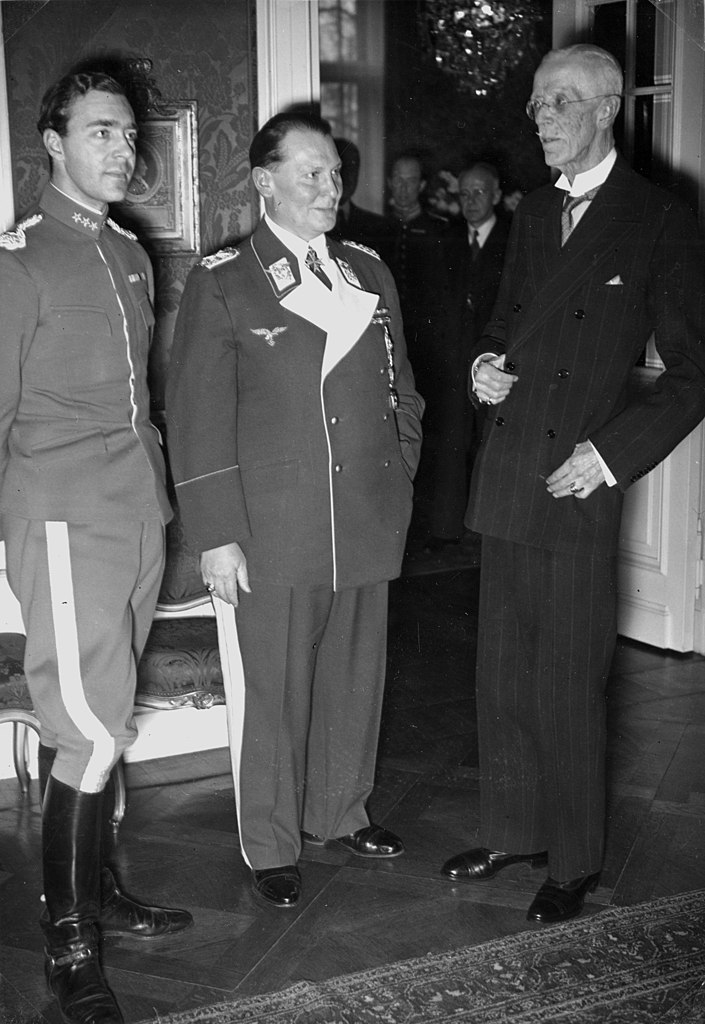
(King Gustaf V and his grandson Prince Gustav Adolf meeting Herman Göring, who had lived in Sweden and had many friends among the Swedish upper class, picture taken in 1939)
Together with the German Military aiding his Government King Gustaf V supported the National Monarchist People's Party of Sweden (former the National Scialist People's Party of Sweden) and the paramilitary group, the Swedish Fascist Militant Organization (SKFO), both also founded by Konrad Hallgren, together with the the Swedish National Royalist Party (former the Swedish National Socialist Party) and the Royalist National Workers Party (former Socialist National Workers' Party). These parties were commonly referred to by their leaders as "Furugårdists" or "Lindholmists". On October 5, 1933, ten followers of Furugård stormed Lindholm's headquarters and stole cash and membership lists and were only stopped by police intervention. The fight between the two parties continued with periodic violence through the parliamentary elections of 1936 where the split caused the parties to fail miserably. Furugård was so discouraged he closed down operations of his SNSP. The NSAP saw further disappointments and a split of the left wing of the party. As time went on, Per Engdahl became a prominent figure in the Swedish National Monarchist movement. After his studies at Uppsala University, Engdahl joined the SKFO in 1928 but left for Bille's new NSFF. In 1930 he founded his own group, the National Association for the New Sweden (RDNS), which merged with Elmo Lindholm's National League of Sweden. Now that Sweden was occupied by the German Empire, King Gustaf V called for unity in the National Royalist Bloc (NRB) that would serve as the new Swedish Government and unite all fascist, national, royalist and monarchist movements.

With the German Empire's strong stance against Bolshevism, the Swedish King Gustaf V who had by now already allowed transition of Axis Central Power troops to support Finland in it's Fight against the Soviet Union supported the Swedish Opposition (SO) created by the National Royalist Bloc. The Swedish Oppositions main concern was anti-communism. Their Leader Engdahl opposed all communism in the building of Swedish society, and printed 60,000 copies of an anti-communist brochure. Although Engdahl's new party under guidance of the National Royalist Bloc (NRB) focused on propaganda and resistance against communism in the own Swedish society and was sending volunteer brigades to fight alongside the Axis Central Powers in Finland and other fronts against the Soviet Union. Engdahl later would call German Emperor Wilhelm III the “god-sent rescuer of Europe” for his direct fight against the Soviet Union.

Inside the Kingdom of Sweden Karl Gustaf V (Oscar Gustaf Adolf, born16 June 1858) was the King of Sweden since 1907. Both the King and his grandson Prince Gustav Adolf socialized with certain Nazi leaders before the Second Great War, though arguably for diplomatic purposes. Gustaf V attempted to convince Hitler during a visit to Berlin to soften his persecution of the Jews, according to historian Jörgen Weibull. He was also noted for appealing to the leader of Hungary to save its Jews "in the name of humanity." At the behest of American President Franklin D. Roosevelt, Gustaf V appealed to Hitler for peace negotiations in 1938, "in the interest of peace". When the German Empire occupied the Kingdom of Sweden, King Gustaf V quickly collaborate with the New Order in Europe and was even happier, when Wilhelm II reinstalled the new German Empire totally. The strong stance of the German Empire against the “Bolshevik pest” as Gustaf called the Soviet Union since the Winter War in Finland that had shaped his view of Fascist Royalists and National Monarchism just as much as his opinion on the communist Bolshevism. I a personal letter King Gustaf V congratulated the German Emperor Wilhelm III for creating the United Baltic Duchy, the Kingdom of White Ruthenia and the Kingdom of Ukrainia and form a bulwark against Bolshevism from Finland to the Neo-Ottoman Empire.

(King Gustaf V and his grandson Prince Gustav Adolf meeting Herman Göring, who had lived in Sweden and had many friends among the Swedish upper class, picture taken in 1939)
Together with the German Military aiding his Government King Gustaf V supported the National Monarchist People's Party of Sweden (former the National Scialist People's Party of Sweden) and the paramilitary group, the Swedish Fascist Militant Organization (SKFO), both also founded by Konrad Hallgren, together with the the Swedish National Royalist Party (former the Swedish National Socialist Party) and the Royalist National Workers Party (former Socialist National Workers' Party). These parties were commonly referred to by their leaders as "Furugårdists" or "Lindholmists". On October 5, 1933, ten followers of Furugård stormed Lindholm's headquarters and stole cash and membership lists and were only stopped by police intervention. The fight between the two parties continued with periodic violence through the parliamentary elections of 1936 where the split caused the parties to fail miserably. Furugård was so discouraged he closed down operations of his SNSP. The NSAP saw further disappointments and a split of the left wing of the party. As time went on, Per Engdahl became a prominent figure in the Swedish National Monarchist movement. After his studies at Uppsala University, Engdahl joined the SKFO in 1928 but left for Bille's new NSFF. In 1930 he founded his own group, the National Association for the New Sweden (RDNS), which merged with Elmo Lindholm's National League of Sweden. Now that Sweden was occupied by the German Empire, King Gustaf V called for unity in the National Royalist Bloc (NRB) that would serve as the new Swedish Government and unite all fascist, national, royalist and monarchist movements.

With the German Empire's strong stance against Bolshevism, the Swedish King Gustaf V who had by now already allowed transition of Axis Central Power troops to support Finland in it's Fight against the Soviet Union supported the Swedish Opposition (SO) created by the National Royalist Bloc. The Swedish Oppositions main concern was anti-communism. Their Leader Engdahl opposed all communism in the building of Swedish society, and printed 60,000 copies of an anti-communist brochure. Although Engdahl's new party under guidance of the National Royalist Bloc (NRB) focused on propaganda and resistance against communism in the own Swedish society and was sending volunteer brigades to fight alongside the Axis Central Powers in Finland and other fronts against the Soviet Union. Engdahl later would call German Emperor Wilhelm III the “god-sent rescuer of Europe” for his direct fight against the Soviet Union.
Last edited:
Chapter 113: The Japanese Industrial-Military Complex
Chapter 113: The Japanese Industrial-Military Complex:
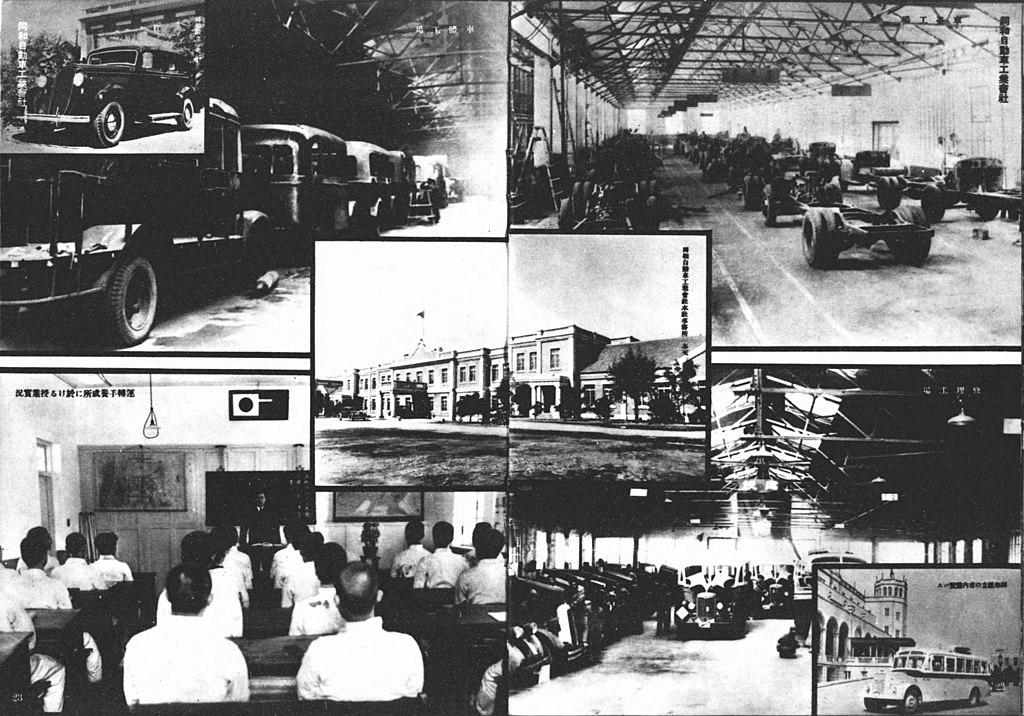
One of the strongest supporters for the Industrialization of the Co-Prosperity Sphere was the Imperial Japanese Army and the Imperial Japanese Navy. Both wished to support and supply their forces directly were they were stationed, with equipment best specialized for the climate and terrain they faced in the different states and provinces of the Co-Prosperity Sphere. The prototype of all future industrial companies like this was the Manchukuo Dōwa Automotive Industries Co Ltd (traditional Chinese/Kyujitai: 同和自動車工業株式會社; Japanese: Dōwa Jidōsha Kōgyō kabushiki kaisha), a Manchukuo-based manufacturer of automobiles, trucks and armored cars. Its head office was in Mukden, the capital of Manchukuo. Founded on March 26, 1934, Dōwa Automotive was a 50-50 joint venture between the Manchurian Railway Company and the government of Manchukuo (just like most of this new joint ventures were partly by the Japanese Army/Navy, or local Japanese Zaibatsu and the local Co-Prosperity Sphere governments and states). Following the First Great War, the Imperial Japanese Army saw the need for increased motorization and mechanization, and soon the Kwantung Army began to import foreign-built vehicles, including the Model 25 Vickers Crossley Armored Car. After the formation of the Empire of Manchukuo, the Kwantung Army's economic policy of self-sufficiency in major strategic heavy industry spurred the need for locally-built trucks and automobiles. Dōwa began with the assistance of Tōkyō Jidōsha Kogyo to build vehicles from knock-down kits, as the infrastructure of sub-suppliers was gradually increased to permit more and more local content. Initial production was estimated at 5000 vehicles per year, many of which were copies of the Crossley design. Dōwa Automotive was later absorbed into the new Manchurian Automotive Production Company (満州自動車製造株式会社 Manshū Jidōsha Seizō Kabushiki Kaisha), a state combine and subsidiary of the Manchurian Heavy Industries in 1940. The Manchurian Automotive Production Company and Manchurian Heavy Industries were modeled after similar Japanese Companies and Industries, but would themselves work as a model for other Japanese Army and Navy industrialization programs for Heavy Industries in the rest of the member states of the Co-Prosperity Sphere.
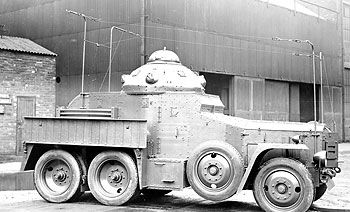

One of the strongest supporters for the Industrialization of the Co-Prosperity Sphere was the Imperial Japanese Army and the Imperial Japanese Navy. Both wished to support and supply their forces directly were they were stationed, with equipment best specialized for the climate and terrain they faced in the different states and provinces of the Co-Prosperity Sphere. The prototype of all future industrial companies like this was the Manchukuo Dōwa Automotive Industries Co Ltd (traditional Chinese/Kyujitai: 同和自動車工業株式會社; Japanese: Dōwa Jidōsha Kōgyō kabushiki kaisha), a Manchukuo-based manufacturer of automobiles, trucks and armored cars. Its head office was in Mukden, the capital of Manchukuo. Founded on March 26, 1934, Dōwa Automotive was a 50-50 joint venture between the Manchurian Railway Company and the government of Manchukuo (just like most of this new joint ventures were partly by the Japanese Army/Navy, or local Japanese Zaibatsu and the local Co-Prosperity Sphere governments and states). Following the First Great War, the Imperial Japanese Army saw the need for increased motorization and mechanization, and soon the Kwantung Army began to import foreign-built vehicles, including the Model 25 Vickers Crossley Armored Car. After the formation of the Empire of Manchukuo, the Kwantung Army's economic policy of self-sufficiency in major strategic heavy industry spurred the need for locally-built trucks and automobiles. Dōwa began with the assistance of Tōkyō Jidōsha Kogyo to build vehicles from knock-down kits, as the infrastructure of sub-suppliers was gradually increased to permit more and more local content. Initial production was estimated at 5000 vehicles per year, many of which were copies of the Crossley design. Dōwa Automotive was later absorbed into the new Manchurian Automotive Production Company (満州自動車製造株式会社 Manshū Jidōsha Seizō Kabushiki Kaisha), a state combine and subsidiary of the Manchurian Heavy Industries in 1940. The Manchurian Automotive Production Company and Manchurian Heavy Industries were modeled after similar Japanese Companies and Industries, but would themselves work as a model for other Japanese Army and Navy industrialization programs for Heavy Industries in the rest of the member states of the Co-Prosperity Sphere.

Last edited:
Threadmarks
View all 912 threadmarks
Reader mode
Reader mode
Recent threadmarks
Chapter 884: Hitler's former Cabinet – A tale of Robert Ley Chapter 885: Imperial Mengjiang Army Uniforms, Ranks, Tactics and Strategy of the Imperial Chosen Army Chapter 886: Mengjiang Khanate Navy and SNLF Chapter 887: The Yankoku Prince and Emperor Chapter 888: Mini-Submarine Carrier Submarines Chapter 889: Capture of the D’Entrecasteaux Islands Chapter 890: The Iberian Wall
Share:
